Big Data/Information Architecture Recap
Iasa Topic of the month: Big Data/Information Architecture
Each month Iasa will cover a new trending topic via eSummits (virtual conferences), interviews, articles and guest blog appearances.
Information Architecture is the structural design of shared information environments; the art and science of organizing and labelling websites, intranets, online communities and software to support usability and findability; and an emerging community of practice focused on bringing principles of design and architecture to the digital landscape.
Below are the eSummit presentations and blog posts released this month. This will help put you on the path to become an Big Data/Information Architecture master.
------------------------------------------------------------------------------------------------------------------------------------------------------------------------------------------------
April Topic: Business Architecture 2.0
March's topic will discuss Business Architecture and will be held on April 20th. With industry expert presenters, you don't want to miss it! Register for free at our eSummit page!
------------------------------------------------------------------------------------------------------------------------------------------------------------------------------------------------
Big Data/Information Architecture eSummit Presentations
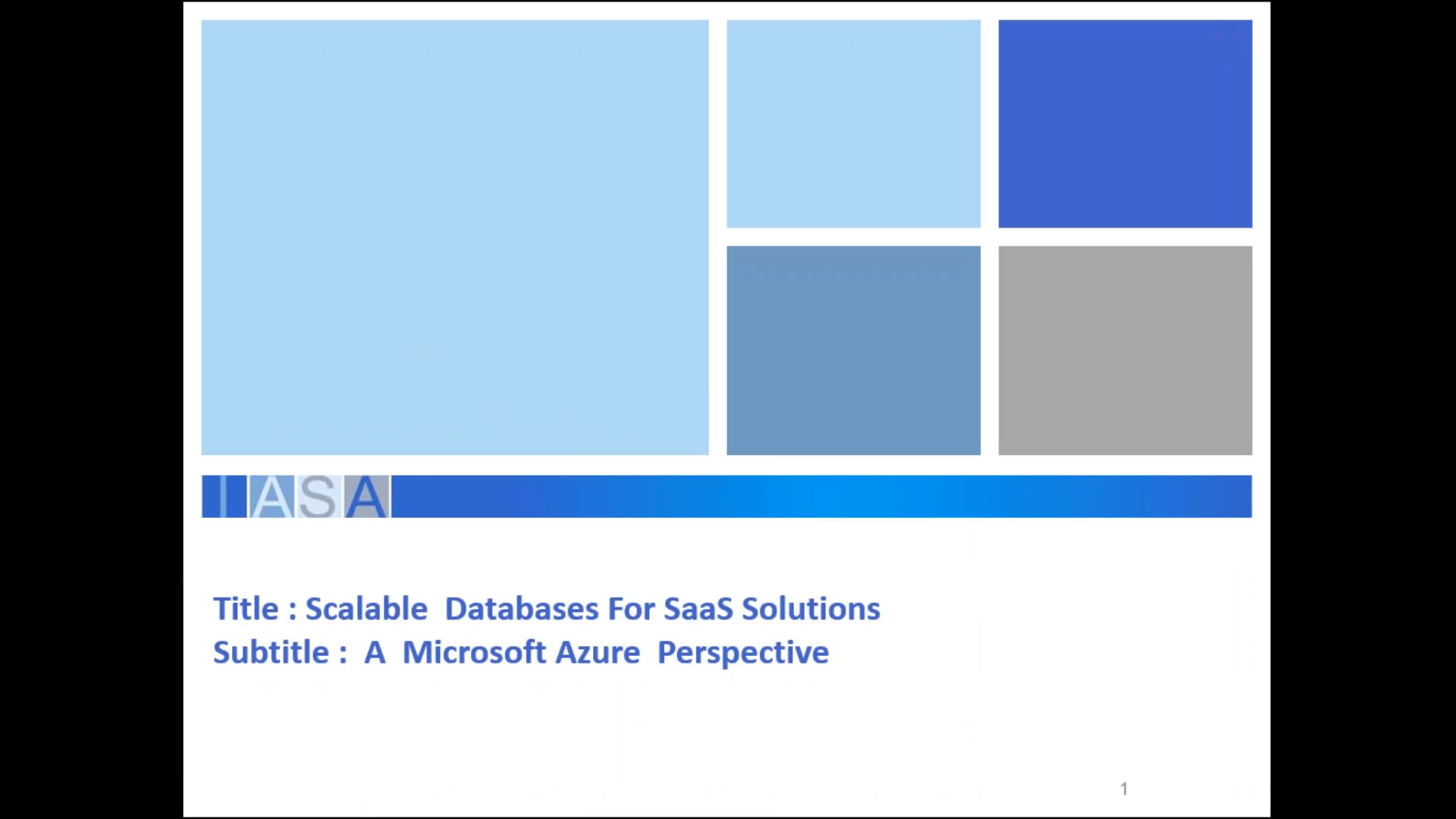
Scalable Database Architecture For SaaS Solution (Microsoft Azure Perspective)
by Srinivasan Sundarav Rajan
Data holds key for the success of many SaaS solutions. Mainly as the application logic remain the constant, it is the Tenant specific data that makes the difference. In this context, this presentation addresses some of the issues associated with the Database Design and scalability for the SaaS Solutions.
To make the reference easier, specific implementation examples are given from Microsoft Azure (which is one of the leading Cloud Platform for hosting SaaS solutions).
However in the benefit of diversified enterprise audience, this presentation does not give any specific recommendation about the respective cloud platforms like AWS, AZURE or BLUEMIX rather let the enterprises utilize their own evaluation mechanism.
Watch Now
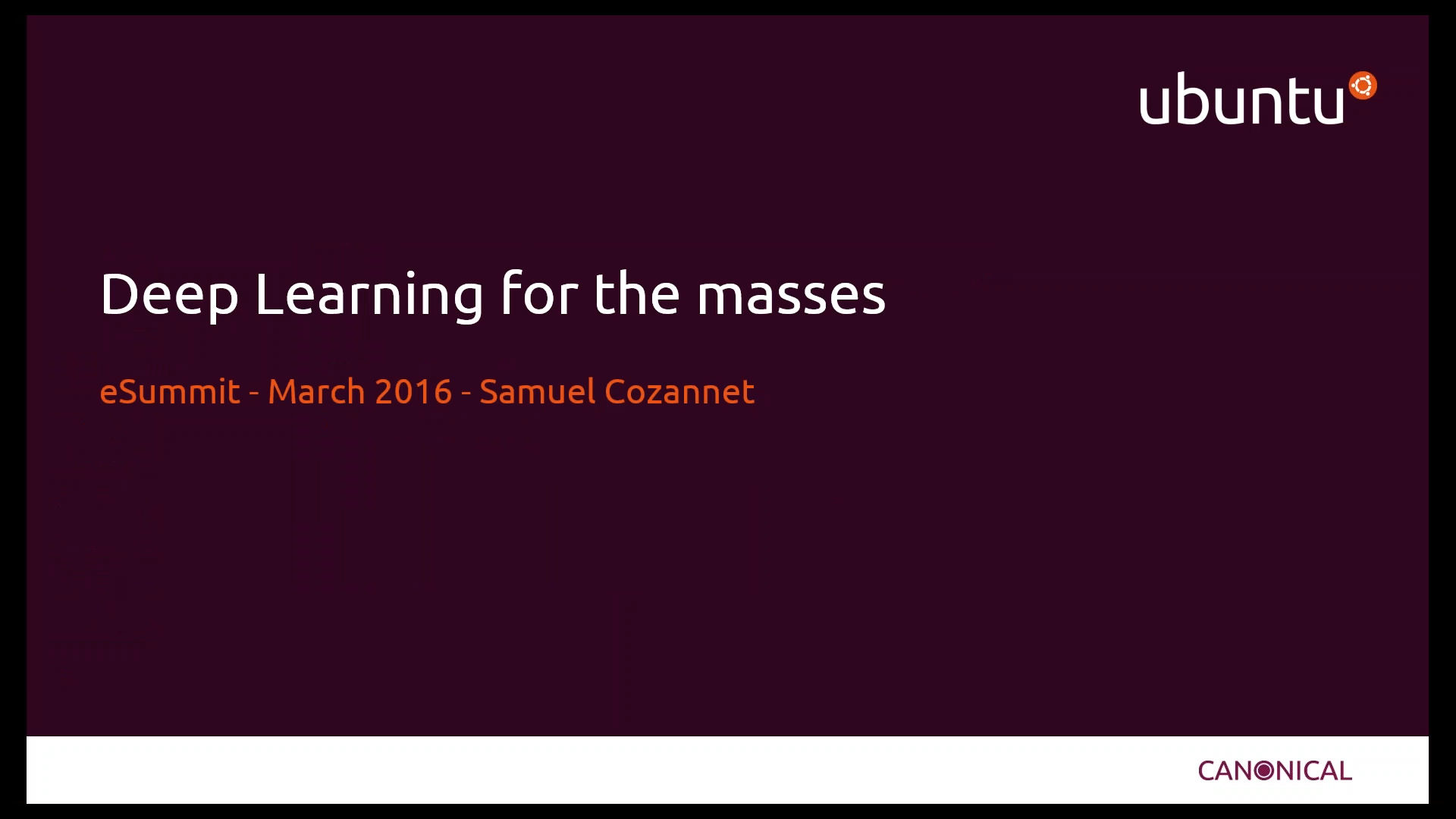
Deep Learning for the masses
by Samuel Cozannet
Deep Learning is hard. So hard that unless you are one of the GAFAs, you are probably stuck with running science experiments on a consumer grade video card. This prevents the next biggest revolution in software to happen.
Using application modelling, cloud technologies and big data, Canonical is creating a DeepStack: a reference application model for deep learning that anyone will be able to deploy, use and consume. In this talk, we will explain the background of this idea, where we currently stand, and discuss a use cases.
Watch Now
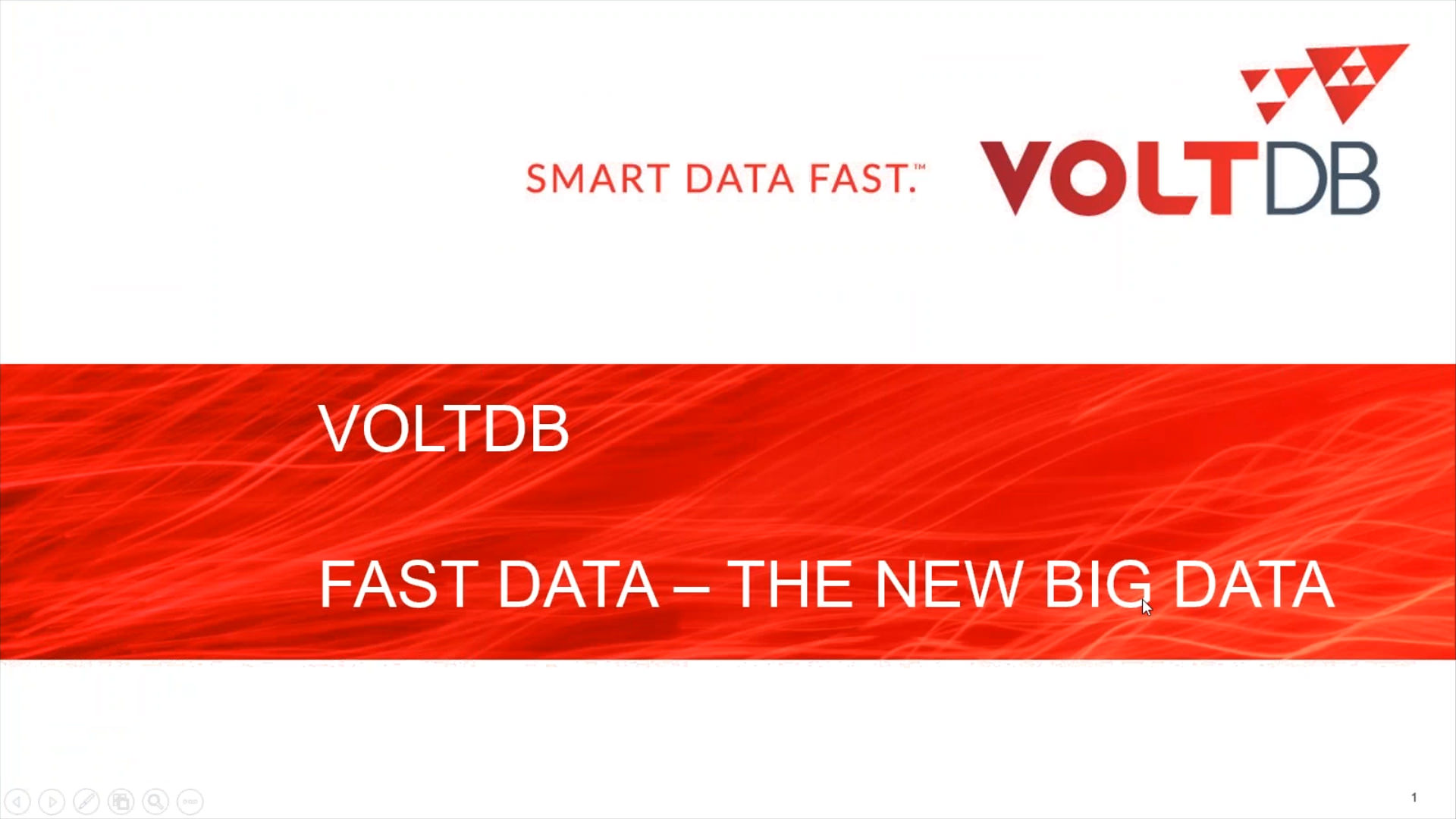
Fast Data – the New Big Data
by Peter Vescuso
The data you need to manage isn’t getting smaller, or slower. It’s a snowball, compounding in both speed and volume.
If you’re building applications on fast, streaming data, you need to analyze it, gain insight and take action on it now, not at the end of a batch job.
Fast data is streaming data or data in motion – and it creates Big Data. Forrester analyst Mike Gualtieri thinks the perishable insights in fast data “can have exponentially more value than after-the- fact traditional historical analytics.” So how to tap it and why would you use the same infrastructure to handle fast data the way you handle big data?
Many approaches used to manage fast data have challenges:
- Batch processing – if your data is handled in batches, even micro batches, actions taken on that data can be too late
- Eventual consistency – sacrificing data consistency can lead to errors and problems such as under/over billing, or under/over budget or resource use
- Integrating a collection of moving parts – trying to build a solution with individual components
What does work? An in-memory database that supports actions and streaming analytics in real-time without sacrificing transactional integrity, performance, and scale.
Tune in to our presentation to hear more and see the lessons learned from an actual real fast data use case.
Watch Now
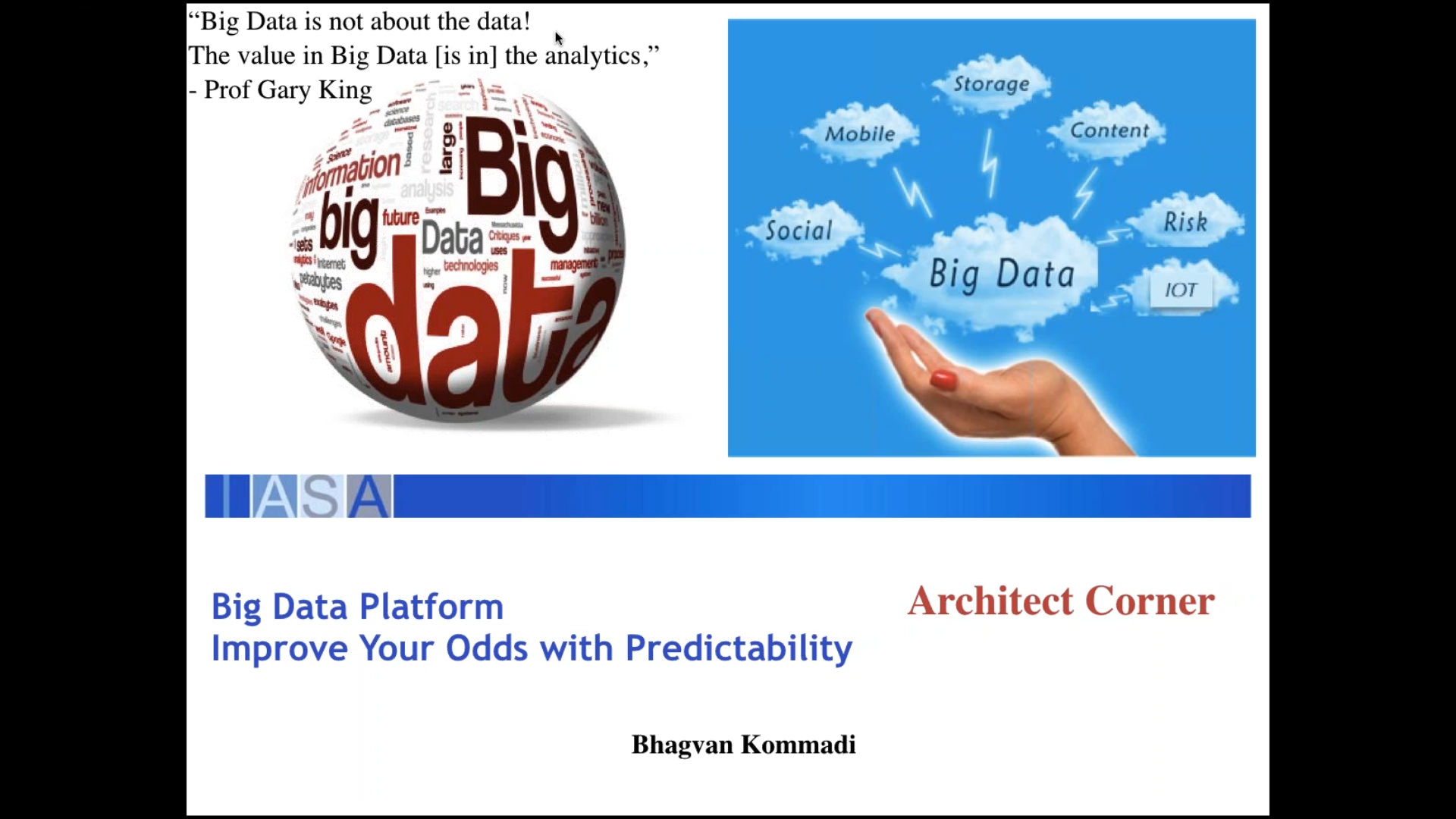
Big Data Platform : Improve Your Odds with Predictability
by Bhagvan Kommadi
Big Data platform has discovery and prediction capabilities. Discovery consists of Clustering, Outlier detection and affinity analysis. Clustering is detecting natural groupings. Outlier detection is detecting anomalies. Affinity analysis is identifying co-occurrence patterns. Classification, Regression, Recommendation is part of Prediction process. Classification is predicting categories. Regression is predicting value. Recommendation is predicting preferences.Enterprises are focussing on big data initiatives towards tactical business objectives, product information management, performance management, business execution correction, innovation through new products and predictive capabilities.
Watch Now

Building an Advanced Analytics Capability
by Tilak Mitra
With analytics becoming mainstream, it is now imperative to formulate a comprehensive analytics blueprint, which provides a framing technique to establish the various type of advanced analytics capabilities necessary to harness true and competitive business advantages. The blueprint demonstrates how data is ingested, provisioned and made available to build various disciplines of analytics, substantiating them with mechanisms on how analytics systems are subsequently built. The session will introduce attendees to an analytics architecture blueprint and demonstrate how to implement it through multiple real-world case studies.
Watch Now

Turning Big Data into Big Understanding with Information Architecture
by Dan Klyn
A key breakthrough in data transmission and storage in the late 1940s was the decoupling of information from meaning. Today, meaning is the proverbial "holy grail" with regard to what's called Big Data. Whether or not there are needles of insight in the haystacks of raw information depends an awful lot on what we mean by meaning. Learn three strategies for working with and intensifying meaning, and the information architectural processes required to turn Big Data into Big Understanding with Dan Klyn from TUG.
Watch Now

The Secret Sauce behind the Most Successful Big Data Strategies
by Justin Lokitz
Innovative, sustainable Big Data Business Models are as pervasive and sought after as they are elusive. For every startup that designs and implements what amounts to a simple and effective big data business model (see any social network), perhaps changing the entire landscape with it, there are literally hundreds (if not thousands) of larger, more mature companies looking for ways to monetize their own big data in the hope that they can capture new revenue streams (and compete effectively in the future). So, what's the secret to successful big data business models and strategies? How might you develop a big data strategy for your company? In this webinar Justin Lokitz will highlight and unpack the most popular big data business models and strategies based and related value propositions. He will also discuss the process by which you can design big data business models and value propositions for your company.
Watch Now

Using Content Analytics to Support the Largest Environmental Response to Date
by Russ Stalters
Content equals all content; structured, semi-structured, and unstructured. Examples include geospatial data, documents, emails, scanned paper (with OCR and/or ICR), databases, images, etc. I define Analytics as: The ability to find patterns in information such as semantic models, text analytics, or graphical representations of data that provide new insights from large repositories of unstructured, semi-structured, and structured data that resides in multiple sources such as file systems, databases, data-streams, via APIs, other platforms, and applications. Typically the vendors and for that matter the analysts focus on tools and technologies when discussing or evaluating Content-Analytics. I maintain that this is short sighted and that for an organization to get the benefit from CA they will need to address people, process, and technology. During my presentation, I will discuss my view on content analytics and real wold experiences with this concept while supporting the largest environmental incident response and restoration.
Watch Now
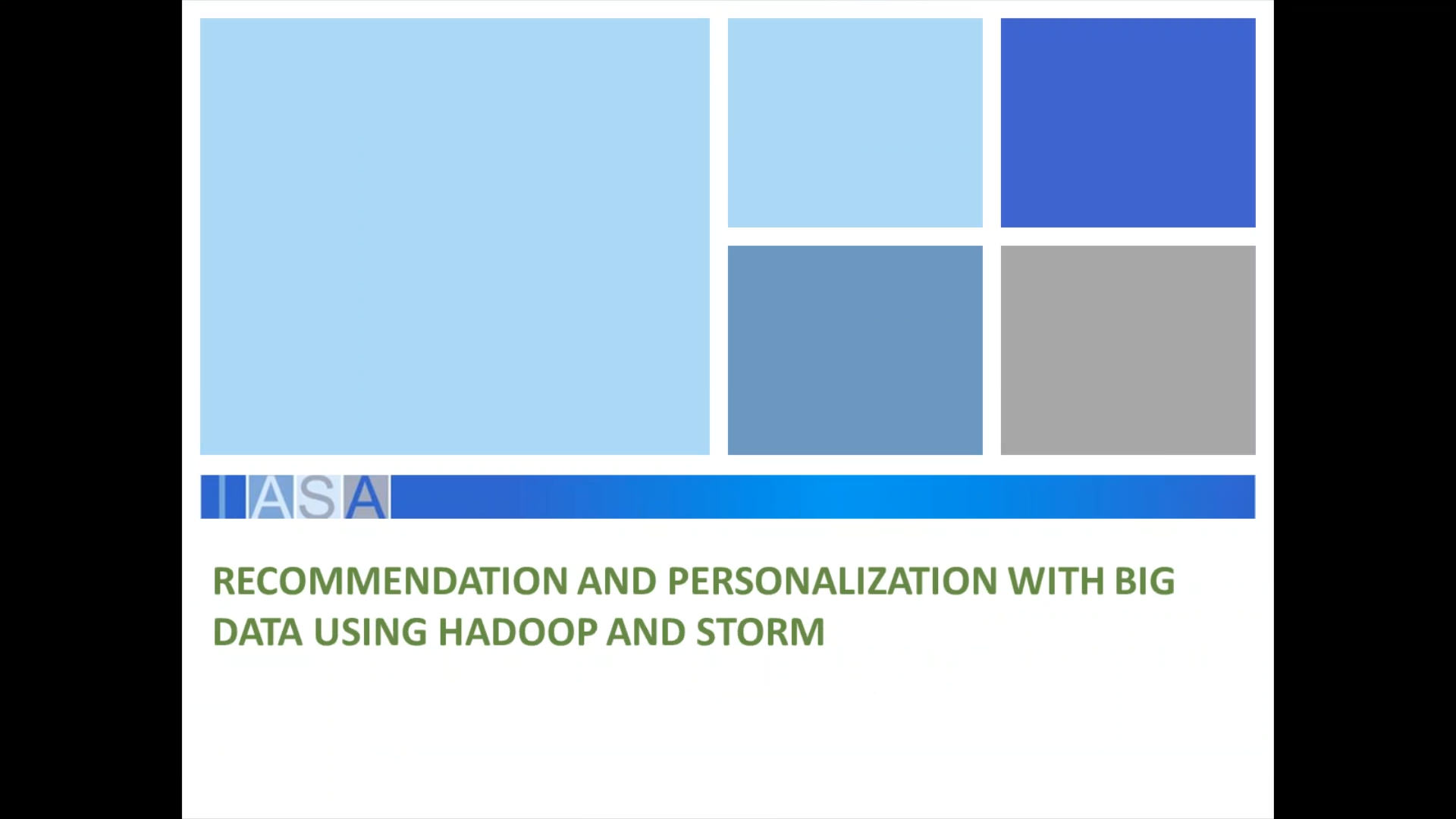
Personalization and Recommendation with Big Data and Hadoop
by Pranab Ghosh
Whenever we have a consumer interacting with some item whether it’s a product, piece of media or something else, there is room for improving the user’s experience by offering other relevant choices in a personalized manner. There is also the potential for increasing the revenue for business in the process.
This is where personalization recommendation engines come into the picture. They provide personalized recommendation based on the user’s behavior and the behavior of other like-minded users.
Watch Now
--------------------------------------------------------------------------------------------------------------------------------------------------------------------------------------------------------------------------------------
Articles and Blog Posts
Big Data Platform: Improve Your Odds with Predictability
Exploring Big Data Business Models & The Winning Value Propositions Behind Them
The Biggest Problems With ISO 42010 and IEEE 1471
Architecting the ecosystem of Big Data to Actionable Insight